Bringing a baby into the world is a matter of love, responsibility, and hope for the future. There is perhaps no greater endeavor than raising a child, and we as parents must know that their development, health, and safety are our top priorities from now on. Before they are even born, we are bombarded with information and advice from experienced parents, oftentimes our own parents, about what we should do once they are here with us, what to avoid, what to buy, what works for this, what doesn’t work for that, and so on. It is a lot of stress to handle in the eve of their birth.
Fortunately for us, we have more or less 9 months to prepare for the baby‘s arrival, and nowadays there is an excess of information about everything, if anything. We have a better understanding of babies and their developmental process, as well as where there could be a lack of something or an excess of another thing. We are better prepared to face the challenges that come naturally with the growing up process of the child, and we should be certain that we have the tools to take the best decisions we can.
Once they are born, there are a lot of things we should have ready. Their first clothes, blanket, diapers, towels, and so much more. In most cases, ideally we would have a support network or at least a supporting partner to help us with the huge responsibility that has been bestowed upon us. Whatever the case, there are several essentials that we should have already at our disposal or at least written down in our shopping list.
Most of these items seem not very important, but they are at the most basic level they could be. Of course, we are talking about objects that allow you to put your baby to rest, or where he can simply stay and play. There are plenty of these objects and they all have different uses and are used at different stages of your child’s development. Below, we go over several of them so you can have a complete picture of the things you should have to always make sure your baby has somewhere to rest and be comfortable.
Moses basket
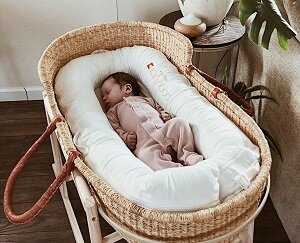 A Moses basket is probably the first thing you will use to carry your baby out of the hospital. It is essentially a big basket, resistant enough to hold a baby comfortably. It is lined with soft beddings where you lay down the baby. The name comes, of course, from the biblical tale in which Moses was placed in a basket to hide him from the Pharaoh’s men who were ordered to find and kill all infants of Israel.
A Moses basket is probably the first thing you will use to carry your baby out of the hospital. It is essentially a big basket, resistant enough to hold a baby comfortably. It is lined with soft beddings where you lay down the baby. The name comes, of course, from the biblical tale in which Moses was placed in a basket to hide him from the Pharaoh’s men who were ordered to find and kill all infants of Israel.
There are several benefits to owning a Moses basket:
Comfortable for your baby
Direct visual contact with baby
Light to carry
Affordable and durable
These baskets have been traditionally adopted as the default first “vehicle” for your baby for a couple of reasons. First, they are the most comfortable way to carry your baby around, both for them and for you. You can lay your baby down and snuggle him or her tight, pick up the basket and just carry it with you. As you transport your baby from one place to another, you can always keep an eye on them since they will be quite literally right in your hand. It is convenient and easy to use a Moses basket because not only are they made from light, natural materials, but also the basket itself presents an opportunity to have something to carry your baby around without spending as much as you would on a stroller right away.
Some cons of Moses baskets include:
Not safe enough for every situation
Very limited use
On the other hand, we have the fact that Moses baskets are honestly not the greatest choice for baby transportation beyond just a couple of meters. These baskets are usually artisanal and are not made to meet any sort of safety standard, so their use is mostly a matter of tradition. Parents acknowledge that their use is not that practical outside of walking with the baby for short distances. As soon as you get to the car, you need to switch to a baby safety seat. Not to mention that babies outgrow Moses baskets fairly quickly, even more so than other items on this list.
Bassinet
Bassinets are a type of cradle which are usually higher and more rigid. Whereas cradles can rock back and forth or side to side, bassinets are more concerned with being accessible, hence their height to make laying the baby down on it easier. Bassinets should be acquired early on when you have a new baby, so they can have a resting place that is truly theirs. You can check here for the best baby bassinet available on the market.
Some pros of getting a bassinet for your baby are:
Comfortable height for parents
Sturdy structure
With a bassinet, you can avoid leaning over all the way down like you would with a traditional crib. Cribs tend to rest at floor level, which makes putting your baby to sleep a pain for your back due to the additional effort every time you lay your child down or pick them up. Moreover, you can rid yourself of the fear of instability that comes with cradles, which can usually rock excessively, because bassinets don’t. They stand on their own fixed legs or on top of an adjustable base. The latter is usually the case, making them also a more portable option than others.
These bassinets do have some cons, which are mainly the following:
Not very versatile
Limited use
Just like with Moses baskets and some other items on this list, bassinets suffer from the same issues with versatility of use and lifespan. A bassinet is just a bassinet, which makes for a tough competition with other objects that can serve more than one purpose or be converted over time. Besides, its use is limited inherently by the rate at which your baby grows, which won’t make it useful past the first couple of months.
Baby carrier
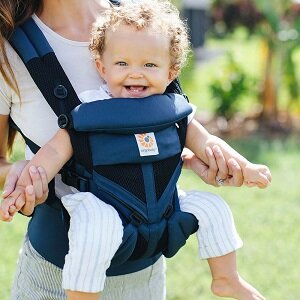 Perhaps one of the most useful items on this list, a baby carrier will help you keep your baby close to you in a way that is not only comfortable for you to walk with him or her but also allows you to do other things simultaneously. Baby carriers come in all shapes and sizes, and you can even craft your own from materials and garment you may already have at home.
Perhaps one of the most useful items on this list, a baby carrier will help you keep your baby close to you in a way that is not only comfortable for you to walk with him or her but also allows you to do other things simultaneously. Baby carriers come in all shapes and sizes, and you can even craft your own from materials and garment you may already have at home.
Among the advantages of baby carriers we find:
Practical designs
Comfortable for parent and baby
Inexpensive
The fact that baby carriers evolved from traditional ways women have used to carry their babies on them for generations tells us a lot about them. First, even the most elaborate designs of this product are easy and practical to use. Most modern carriers feature some sort of hard support for the baby and straps to make sure it is close to the parent, but anyone with a piece of fabric large enough can make their own carrier by wrapping it around themselves and securing the wrap. Either way, babies end up sitting or curling up tightly next to their parent’s torso, and parents are free to walk around and do simple chores since their hands are free. They are generally rather inexpensive, but they can be free if you learn how to make your own.
Some cons of using baby carriers might be:
Can get pretty hot
Comfort depends on the parent
Baby carriers only have a few minor drawbacks, namely in terms of long-term use. For instance, keeping your baby so close to you for extended periods of time will end up making you sweat quite a bit. They themselves might get a little fuzzy after a while, particularly if they are already a bit older or aren’t used to the carrier yet. It is also up to the parent to decide if they have enough core strength to carry a baby around as much as they will probably need to. In case they don’t feel like it, there are alternatives, of course.
Stroller
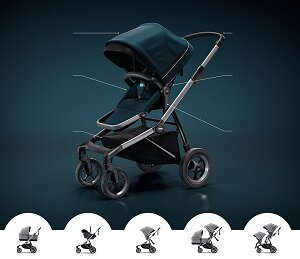 Speaking of alternative ways to carry a baby with you, the most popular one is obviously the stroller. We all know strollers, and nowadays there seem to be more types of strollers than types of cars. A stroller is basically a modern version of a baby carriage, equipped with a seat that may or may not adjust to become a bed, and with lots of compartments and features to make parents’ lives easier all around.
Speaking of alternative ways to carry a baby with you, the most popular one is obviously the stroller. We all know strollers, and nowadays there seem to be more types of strollers than types of cars. A stroller is basically a modern version of a baby carriage, equipped with a seat that may or may not adjust to become a bed, and with lots of compartments and features to make parents’ lives easier all around.
As you can probably imagine, strollers have many points in their favor, some of which are:
Practical and universally used
Many different designs
Weather resistant in most cases
Long-lasting
Nearly everyone you know who has a baby also has a stroller. They are truly the easiest way to transport babies with minimum effort and maximum safety. Babies on a sitting position will always be secured by an infant-proof seat belt, and the strollers themselves have breaks and can lock into place in some models. There are hundreds of designs to accomodate parents’ needs, including but not limited to strollers that attach to your bike, strollers with compartments large enough for groceries, strollers with wagons, twin strollers, and more. Almost all designs feature some sort of protective cover on the front, mostly breathable mosquito nets and waterproof transparent covers for rain and snow. Strollers are essential, so they are designed to last you well until kids are 5 and even 6 years old.
However, there are cons to strollers you should be mindful of:
Can be expensive
Cumbersome depending on the model
The obvious fact about something as essential as a stroller is that it is a one-time expense in most cases and, therefore, pricey. Depending on the model you choose and the features that are important to you, a stroller can get really expensive. Furthermore, if you decide not to consider some important features, it is likely you will regret it further down the line. For example, if your stroller doesn’t fold properly or enough, carrying it around will be an absolute hassle and defeat its purpose entirely.
Pack and play
On the realm of artifacts that can save your life, a pack and play should definitely be on the list. When you are not on the go but somewhere where you just need to put your baby down and keep him entertained, pack and plays really shine. Much like its name states, it is basically a portable play pen for your baby that can also have other uses depending on what you need. You can take a look at some of the best pack and play suitable for your child here.
Benefits of owning and having a pack and play include:
Portability
Versatility
Affordability
The name pack and play truly says it all. It is a plastic play pen with a padded bottom where babies can play, crawl, and even sleep if need be. Models vary, but most of them tend to be easily foldable and light in weight so you can carry and assemble them anywhere. If you are leaving the baby with your parents for the day, for example, they probably don’t have a crib for him or her, but a pack and play with bedding and a blanket can easily double as a makeshift crib for daytime naps until you pick them back up. They are usually quite affordable and standard in their functions, so there is little room for regrets with a pack and play.
Like all things, there are also some disadvantages, which are:
Not very resistant
Quickly outgrown
Being made of light materials and with portability in mind is a double-edged sword when it comes to baby stuff. Pack and plays can be really neat, but also they can be easily toppled by a baby playing roughly enough inside it. This will become an increasingly looming danger as the baby grows in size and strength, which in turn makes the pack and play useless to keep them contained.
Bonus: baby car seat
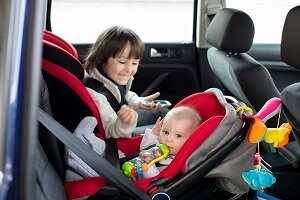 Although not all parents own cars, road safety should be an absolute priority for parents if they ever travel by car with their baby. In this sense, getting a baby car seat is just mandatory, since it is literally against the law in most places to drive a car with a baby that is not properly secured. Baby car seats come in all shapes and sizes, but security should always be at the top of your desired features list before anything else that is purely aesthetic.
Although not all parents own cars, road safety should be an absolute priority for parents if they ever travel by car with their baby. In this sense, getting a baby car seat is just mandatory, since it is literally against the law in most places to drive a car with a baby that is not properly secured. Baby car seats come in all shapes and sizes, but security should always be at the top of your desired features list before anything else that is purely aesthetic.
Child safety seats evidently have a ton of advantages, but the main ones are:
Enhanced security for the baby
Peace of mind for parents
Versatile and long-lasting
Well, the first one should be obvious: your children will be safe in the event of any sort of car accident. These seats are designed to withstand tremendous impacts and safeguard children above all else, so you can rest easy as long as your baby is tightly strapped to their seat in the back of the car. Much like strollers, safety seats are an essential object to own if you have both a car and a baby, so they are conceived to double as a Moses basket of sorts in some cases, and also to adapt over time to keep even older children safe in the car.
Some cons of baby car seats are:
Reduced space in car
Children get tired quickly
Not all vehicles are compatible with all car seats. While you may force most of them to fit into your car, reality is that you want to keep your baby safe but you would also like to have at least one other seat available in the back if possible. Sometimes, installing a child safety seat renders the entire back of the car unusable, which is a small price to pay to have the peace of mind that your baby will always be safe, but still not as practical as it could be. In addition, babies and small children tend to get tired really quickly of being strapped to the seat for long periods of time, which is hard to deal with when you are in the middle of a long road trip and there is no other option for them.
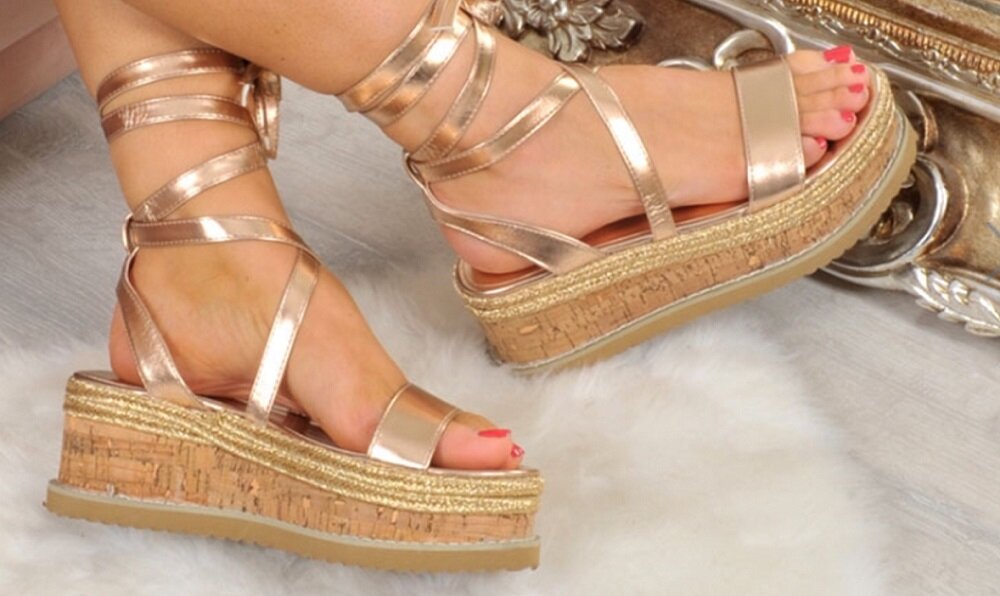
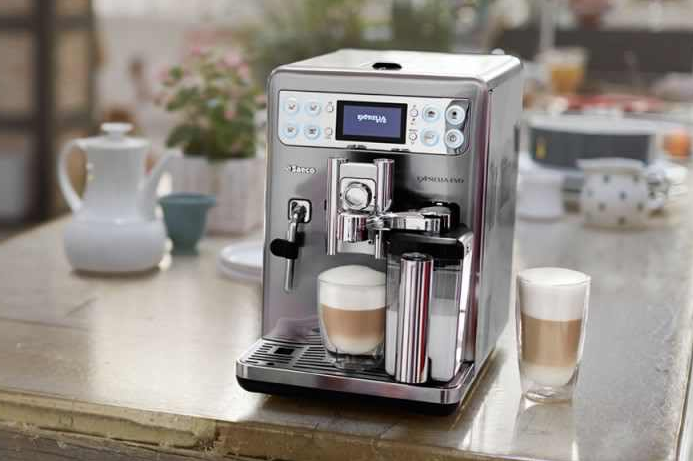
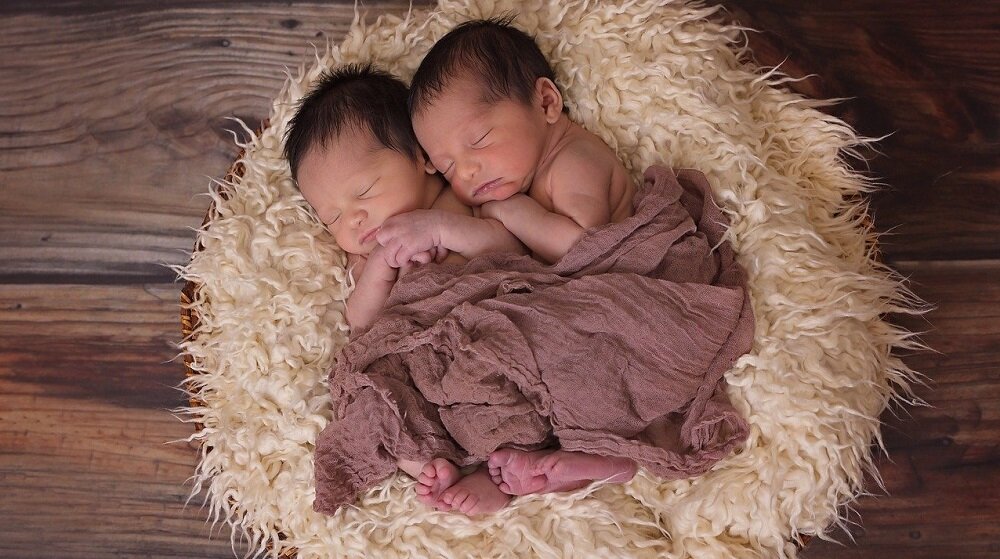
 A Moses basket is probably the first thing you will use to carry your baby out of the hospital. It is essentially a big basket, resistant enough to hold a baby comfortably. It is lined with soft beddings where you lay down the baby. The name comes, of course, from the biblical tale in which Moses was placed in a basket to hide him from the Pharaoh’s men who were ordered to find and kill all infants of Israel.
A Moses basket is probably the first thing you will use to carry your baby out of the hospital. It is essentially a big basket, resistant enough to hold a baby comfortably. It is lined with soft beddings where you lay down the baby. The name comes, of course, from the biblical tale in which Moses was placed in a basket to hide him from the Pharaoh’s men who were ordered to find and kill all infants of Israel. Perhaps one of the most useful items on this list, a baby carrier will help you keep your baby close to you in a way that is not only comfortable for you to walk with him or her but also allows you to do other things simultaneously. Baby carriers come in all shapes and sizes, and you can even craft your own from materials and garment you may already have at home.
Perhaps one of the most useful items on this list, a baby carrier will help you keep your baby close to you in a way that is not only comfortable for you to walk with him or her but also allows you to do other things simultaneously. Baby carriers come in all shapes and sizes, and you can even craft your own from materials and garment you may already have at home. Speaking of alternative ways to carry a baby with you, the most popular one is obviously the stroller. We all know strollers, and nowadays there seem to be more types of strollers than types of cars. A stroller is basically a modern version of a baby carriage, equipped with a seat that may or may not adjust to become a bed, and with lots of compartments and features to make parents’ lives easier all around.
Speaking of alternative ways to carry a baby with you, the most popular one is obviously the stroller. We all know strollers, and nowadays there seem to be more types of strollers than types of cars. A stroller is basically a modern version of a baby carriage, equipped with a seat that may or may not adjust to become a bed, and with lots of compartments and features to make parents’ lives easier all around. Although not all parents own cars, road safety should be an absolute priority for parents if they ever travel by car with their baby. In this sense, getting a baby car seat is just mandatory, since it is literally against the law in most places to drive a car with a baby that is not properly secured. Baby car seats come in all shapes and sizes, but security should always be at the top of your desired features list before anything else that is purely aesthetic.
Although not all parents own cars, road safety should be an absolute priority for parents if they ever travel by car with their baby. In this sense, getting a baby car seat is just mandatory, since it is literally against the law in most places to drive a car with a baby that is not properly secured. Baby car seats come in all shapes and sizes, but security should always be at the top of your desired features list before anything else that is purely aesthetic.
